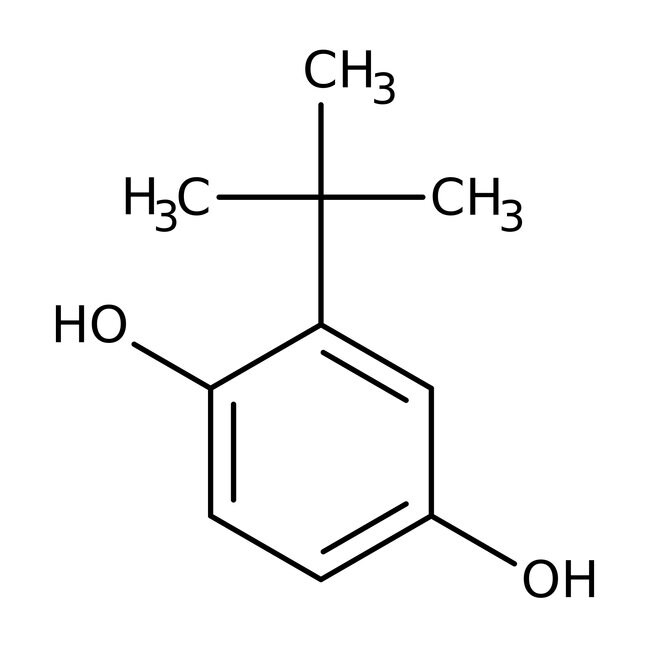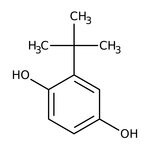Search Thermo Fisher Scientific
tert-Butylhydroquinone, 97 %, Thermo Scientific Chemicals



tert-Butylhydroquinone, 97 %, Thermo Scientific Chemicals
Identifiants chimiques
Spécifications
Description
This Thermo Scientific Chemicals brand product was originally part of the Alfa Aesar product portfolio. Some documentation and label information may refer to the legacy brand. The original Alfa Aesar product / item code or SKU reference has not changed as a part of the brand transition to Thermo Scientific Chemicals.
Le TBHQ a été utilisé pour étudier l’inactivation des souches barotolérantes de Listeria monocytogenes et d’Escherichia coli. Les matériaux d’électrode respectueux de l’environnement pour les supercondensateurs ont été obtenus en décorant la surface des nanofeuilles de graphène avec TBHQ. Le TBHQ est fréquemment utilisé comme agent de conservation alimentaire. Inhibition de la rancidité oxydative dans des flocons de poisson cuits congelés par la tert-butylhydroquinone. L’activation de l’élément de réponse antioxydante dépendante du facteur 2 apparenté au facteur E2 nucléaire se produit par la tert-butylhydroquinone de préférence dans des astrocytes.
Solubilité
Légèrement soluble dans l’eau (10 g/l).
Remarques
Stockez-le dans un endroit frais. Garder le récipient bien fermé dans un endroit sec et bien ventilé. Conserver à l’écart des agents oxydants forts.
Figures
Documentation et téléchargements
Certificats
Foire aux questions (FAQ)
Citations et références
Sécurité et manipulation
Classification of the substance or mixture
CLP classification - Regulation(EC) No 1272/2008
Label Elements
Signal Word
Warning
Hazard Statements
H302 + H312 - Harmful if swallowed or in contact with skin
H315 - Causes skin irritation
H317 - May cause an allergic skin reaction
H319 - Causes serious eye irritation
H335 - May cause respiratory irritation
H410 - Very toxic to aquatic life with long lasting effects
Precautionary Statements
P261 - Avoid breathing dust/fume/gas/mist/vapors/spray
P273 - Avoid release to the environment
P301 + P312 - IF SWALLOWED: Call a POISON CENTER or doctor/physician if you feel unwell
P305 + P351 + P338 - IF IN EYES: Rinse cautiously with water for several minutes. Remove contact lenses, if present and easy to do. Continue rinsing
P280 - Wear protective gloves/protective clothing/eye protection/face protection
P302 + P352 - IF ON SKIN: Wash with plenty of soap and water